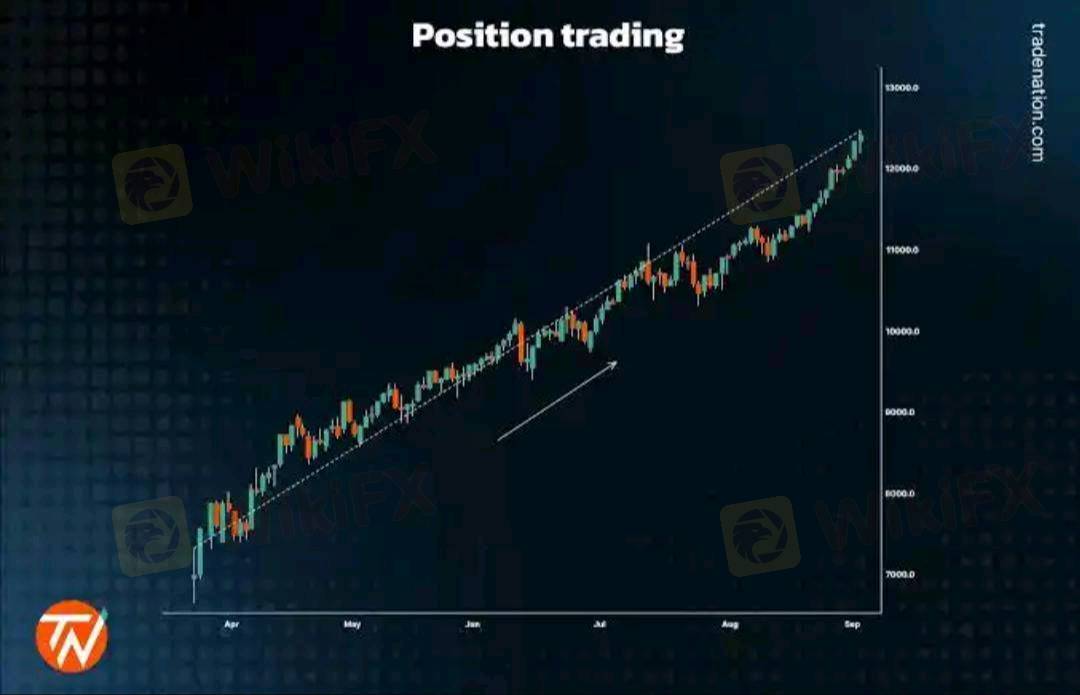
2025-02-06 11:59
업계position trading in forex trading
#firstdealofthenewyearAKEEL
Position trading in forex is a long-term trading strategy where traders hold positions for weeks, months, or even years. This approach focuses on capturing significant price movements, often driven by macroeconomic trends and fundamental analysis.
Key Characteristics of Position Trading
1. Long Holding Period
Trades are held for extended periods to capitalize on major market trends.
Short-term price fluctuations are generally ignored.
2. Emphasis on Fundamental Analysis
Traders base decisions on macroeconomic factors, such as:
Central bank policies.
Economic growth (GDP).
Inflation and interest rates.
Geopolitical events.
Technical analysis is used as a secondary tool to refine entries and exits.
3. Lower Trade Frequency
Fewer trades are executed compared to shorter-term strategies like scalping or day trading.
This reduces transaction costs and the need for constant monitoring.
4. High Patience and Discipline
Traders must remain committed to their analysis despite short-term market volatility.
Emotional decision-making is minimized due to the long-term focus.
Advantages of Position Trading
1. Reduced Stress
Less frequent trading means less time spent analyzing charts or monitoring trades.
2. Cost Efficiency
Lower transaction costs as a result of fewer trades.
3. Potential for Large Gains
Profits are based on capturing large market trends rather than small price fluctuations.
4. Time Flexibility
Suitable for individuals with other commitments, as it requires less frequent involvement.
Risks of Position Trading
1. Exposure to Long-Term Risks
Extended holding periods increase exposure to unexpected market events, such as geopolitical crises.
2. Swap Fees
Holding positions overnight may incur swap fees, which can add up over time.
3. Capital Requirements
Requires sufficient margin and account balance to withstand significant price fluctuations without triggering stop-outs.
Key Strategies for Position Trading
1. Trend Following
Identify long-term trends using moving averages or trendlines.
Enter trades in the direction of the dominant trend.
2. Breakout Trading
Look for significant price breakouts from key levels (e.g., support, resistance).
Enter trades after confirming the breakout's validity.
3. Carry Trade
Hold positions in currencies with higher interest rates, earning positive swap fees.
4. Fundamental Analysis-Based
Monitor economic indicators and news to predict long-term currency movements.
Risk Management for Position Trading
1. Use Stop-Loss Orders
Set wide stop-loss levels to account for normal market volatility while protecting against extreme losses.
2. Diversify
Avoid concentrating all capital in a single trade or currency pair.
3. Position Sizing
Adjust trade size to ensure you can handle large fluctuations without risking too much capital.
Position trading is ideal for patient traders who prefer long-term strategies and are comfortable analyzing macroeconomic factors. While it involves less frequent activity, it requires thorough planning and strong risk management to succeed.
#firstdealofthenewyearAKEEL
좋아요 0
Abdullpk1
Trader
인기있는 콘텐츠
시장 분석
투자주체별매매 동향
시장 분석
유로존 경제 쇠퇴 위기 직면
시장 분석
국제 유가는 어디로
시장 분석
미국증시 레버리지(Leverage)·인버스(Inverse)형의 ETF, 최근 사상 최대 신
시장 분석
투기장 된 원유 ETL...첫 투자위험 발령
시장 분석
RBNZ 양적완화 확대
포럼 카테고리

플랫폼

전시회

IB

모집

EA

업계

시세

인덱스
position trading in forex trading
 나이지리아 | 2025-02-06 11:59
나이지리아 | 2025-02-06 11:59#firstdealofthenewyearAKEEL
Position trading in forex is a long-term trading strategy where traders hold positions for weeks, months, or even years. This approach focuses on capturing significant price movements, often driven by macroeconomic trends and fundamental analysis.
Key Characteristics of Position Trading
1. Long Holding Period
Trades are held for extended periods to capitalize on major market trends.
Short-term price fluctuations are generally ignored.
2. Emphasis on Fundamental Analysis
Traders base decisions on macroeconomic factors, such as:
Central bank policies.
Economic growth (GDP).
Inflation and interest rates.
Geopolitical events.
Technical analysis is used as a secondary tool to refine entries and exits.
3. Lower Trade Frequency
Fewer trades are executed compared to shorter-term strategies like scalping or day trading.
This reduces transaction costs and the need for constant monitoring.
4. High Patience and Discipline
Traders must remain committed to their analysis despite short-term market volatility.
Emotional decision-making is minimized due to the long-term focus.
Advantages of Position Trading
1. Reduced Stress
Less frequent trading means less time spent analyzing charts or monitoring trades.
2. Cost Efficiency
Lower transaction costs as a result of fewer trades.
3. Potential for Large Gains
Profits are based on capturing large market trends rather than small price fluctuations.
4. Time Flexibility
Suitable for individuals with other commitments, as it requires less frequent involvement.
Risks of Position Trading
1. Exposure to Long-Term Risks
Extended holding periods increase exposure to unexpected market events, such as geopolitical crises.
2. Swap Fees
Holding positions overnight may incur swap fees, which can add up over time.
3. Capital Requirements
Requires sufficient margin and account balance to withstand significant price fluctuations without triggering stop-outs.
Key Strategies for Position Trading
1. Trend Following
Identify long-term trends using moving averages or trendlines.
Enter trades in the direction of the dominant trend.
2. Breakout Trading
Look for significant price breakouts from key levels (e.g., support, resistance).
Enter trades after confirming the breakout's validity.
3. Carry Trade
Hold positions in currencies with higher interest rates, earning positive swap fees.
4. Fundamental Analysis-Based
Monitor economic indicators and news to predict long-term currency movements.
Risk Management for Position Trading
1. Use Stop-Loss Orders
Set wide stop-loss levels to account for normal market volatility while protecting against extreme losses.
2. Diversify
Avoid concentrating all capital in a single trade or currency pair.
3. Position Sizing
Adjust trade size to ensure you can handle large fluctuations without risking too much capital.
Position trading is ideal for patient traders who prefer long-term strategies and are comfortable analyzing macroeconomic factors. While it involves less frequent activity, it requires thorough planning and strong risk management to succeed.
#firstdealofthenewyearAKEEL
좋아요 0
나 도 댓 글 달 래.
제출
0코멘트

댓글이 아직 없습니다. 첫 번째를 만드십시오.

제출
댓글이 아직 없습니다. 첫 번째를 만드십시오.